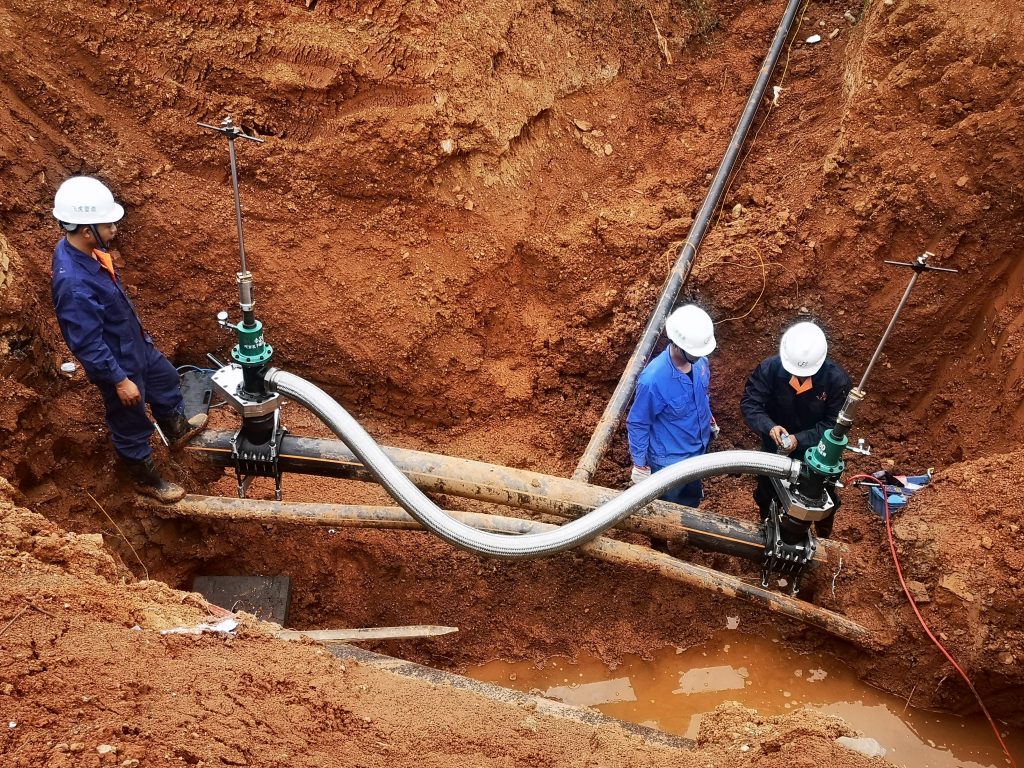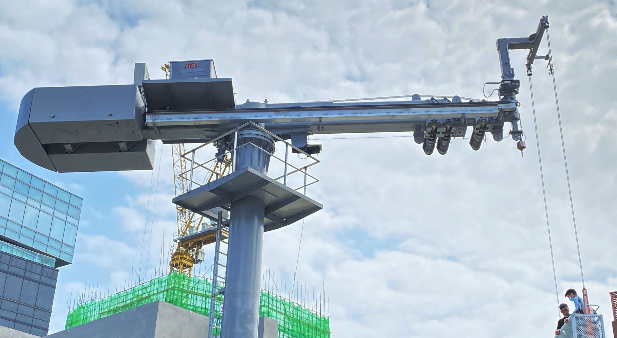Understanding PE Line Stopping
PE line stopping is a specialized technique used to temporarily control or isolate the flow within polyethylene pipelines without interrupting overall service. It provides a practical way to maintain, repair, or modify a pipeline while keeping the system operational. This method is especially valuable in industries where downtime is costly or service interruptions are not acceptable, such as water supply systems, natural gas distribution, and industrial facilities. Unlike traditional methods that require complete shutdown, PE line stopping ensures that pipelines can remain pressurized and functional. By installing a stopping device at the required section, technicians can isolate specific areas of the pipeline for maintenance. This approach improves efficiency and reduces unnecessary costs. For many utilities and contractors, PE line stopping is a dependable solution to manage pipelines safely and effectively.
How PE Line Stopping Works
The process of PE line stopping involves several technical steps that must be carried out with precision. First, technicians identify the section of the pipeline where work is required and assess the pipe condition. Then, a specialized fitting is attached to the pipeline, which serves as the entry point for the line stopping equipment. After installing the fitting, the pipeline is tapped to create an access hole while the system remains pressurized. The stopping device, commonly referred to as a plugging head, is inserted into the pipe through this access point. Once deployed, the head expands to seal the flow, effectively isolating the desired section. After maintenance or repairs are completed, the device is removed, and the access hole is sealed with a completion plug. Each stage requires careful attention to detail, ensuring that pipeline integrity and safety are maintained throughout the process.
Benefits of PE Line Stopping in Pipeline Maintenance
PE line stopping delivers a wide range of advantages that make it a preferred choice for many industries. One of its biggest benefits is that it allows pipelines to remain operational during repairs, preventing service disruptions that can affect thousands of customers. Another key advantage is enhanced safety, as the method is designed to minimize risks during maintenance activities. PE line stopping also reduces downtime, allowing industries and municipalities to save on both time and labor costs. The process is less invasive compared to replacing large sections of pipelines, which results in lower expenses. Additionally, it is an environmentally responsible option, since it reduces the likelihood of leaks or spills. For utility providers that must manage critical services, PE line stopping offers both reliability and peace of mind. Ultimately, it ensures smooth operations while enabling essential maintenance.
Typical Applications of PE Line Stopping
PE line stopping has a wide range of applications across industries that rely on uninterrupted flow in their pipeline systems. In municipal water supply systems, it is used to isolate sections of the network for repairs while maintaining service to the rest of the community. Gas distribution companies also use it to perform maintenance or upgrades without cutting off supply to households and businesses. Industrial facilities often benefit from this method to ensure production lines continue running during critical maintenance. It is also commonly applied in emergency repair situations, where a quick solution is needed to stop flow and prevent further damage. The versatility of PE line stopping makes it useful in both planned projects and unexpected challenges. This adaptability is one reason why it has become a trusted method worldwide. For industries that demand reliability, its range of uses makes it an indispensable tool.
Safety Considerations in PE Line Stopping
Safety plays a critical role in any pipeline operation, and PE line stopping is no exception. To ensure safe execution, technicians must follow industry standards and regulations that govern the process. Proper training and certification are required for those handling the equipment to minimize risks. One of the most important considerations is pressure control, as working with pressurized systems demands precise handling. Specialized safety measures are also in place to prevent leaks, structural damage, or accidents. Another important step is conducting thorough inspections before and after the line stop to confirm pipeline integrity. When performed correctly, PE line stopping provides a secure way to manage maintenance without exposing workers or communities to unnecessary hazards. Safety-focused planning ensures the process remains both effective and reliable for all stakeholders.
Tools and Equipment Used in PE Line Stopping
The success of PE line stopping relies heavily on the proper use of specialized tools and equipment. Line stopping machines are at the core of the process, designed to insert and expand the plugging head within the pipeline. These machines work in conjunction with tapping equipment, which creates the necessary access hole while maintaining system pressure. Sealing heads or plugs are designed specifically for polyethylene pipelines, ensuring compatibility and a secure seal. Additional fittings are used to attach the equipment to the pipe safely. Inspection devices and monitoring tools are also essential, as they help confirm pressure levels and detect potential issues. Supporting equipment, such as lifting devices and safety gear, further ensures smooth operations. Each piece of equipment contributes to the precision and safety of the process, making PE line stopping a highly specialized field.
Comparing PE Line Stopping with Alternative Methods
PE line stopping is often compared with other pipeline maintenance techniques, and understanding the differences helps stakeholders make informed choices. Hot tapping, for example, is another method that involves creating an access point on a live pipeline. While hot tapping allows for connections or extensions, it does not provide the same isolation benefits as line stopping. Temporary bypass systems are also alternatives, but they require additional infrastructure and may be more time-consuming. Compared to these methods, PE line stopping offers a balance of speed, efficiency, and reliability. It eliminates the need for extensive modifications while allowing targeted isolation. Industries that require cost-effective solutions often find it the most practical choice. By evaluating the advantages of PE line stopping against alternatives, decision-makers can choose the best method for their specific pipeline challenges.
Innovations and Advancements in PE Line Stopping Technology
Like many areas of infrastructure, PE line stopping has evolved with advancements in technology. Modern line stopping equipment has been designed to handle larger pipe diameters and higher pressures safely. Innovations in sealing head design ensure stronger and longer-lasting seals, even in challenging conditions. Digital monitoring systems now allow technicians to track pressure and flow in real time during the process. Remote-control systems are also being adopted, increasing safety by reducing direct human intervention. Additionally, improvements in polyethylene materials have enhanced compatibility and durability for line stopping equipment. These technological innovations make the process faster, more efficient, and more secure. As industries continue to demand reliability, ongoing advancements will further strengthen the role of PE line stopping in pipeline management.
Best Practices for Successful PE Line Stopping Projects
To ensure that PE line stopping projects are executed effectively, best practices must be followed from planning to completion. A detailed pre-assessment and site survey should be performed to evaluate the condition of the pipeline and identify potential challenges. Equipment calibration is equally important, ensuring that tools function precisely as required. During the operation, constant communication with utility stakeholders helps coordinate the process and address unexpected situations. Technicians should strictly follow safety protocols and adhere to industry regulations at every step. Post-operation inspections are vital to confirm that the pipeline remains secure and fully functional. Maintaining detailed records of the procedure also helps in future planning and compliance audits. By combining preparation, precision, and communication, projects achieve maximum efficiency and safety.
Frequently Asked Questions (FAQ)
- What size of PE pipes can be stopped?
PE line stopping can be performed on a wide range of pipe diameters, from small municipal lines to large industrial systems, depending on the equipment used. - How long can a line stop be left in place?
Line stops can remain in place temporarily for the duration of maintenance, usually hours or days, depending on the project requirements. - Does PE line stopping affect water or gas quality?
No, the method is designed to maintain system integrity and does not contaminate the fluid or gas inside the pipeline. - Can PE line stopping be performed on pressurized systems?
Yes, it is specifically designed to be executed while the system remains under pressure, which is one of its primary advantages. - What industries most benefit from this technique?
Municipal water systems, gas distribution networks, and industrial facilities all gain significant value from PE line stopping.
Takeaway
PE line stopping stands out as a safe, efficient, and cost-effective solution for pipeline maintenance and repair. It allows essential services to continue uninterrupted while providing the flexibility to isolate sections for repair. With advancements in technology, the method has become even more reliable and adaptable across industries. By following best practices and prioritizing safety, organizations can depend on PE line stopping as a practical approach to managing pipelines effectively. For municipalities, industrial operators, and contractors, adopting this method ensures both operational continuity and long-term system integrity.











